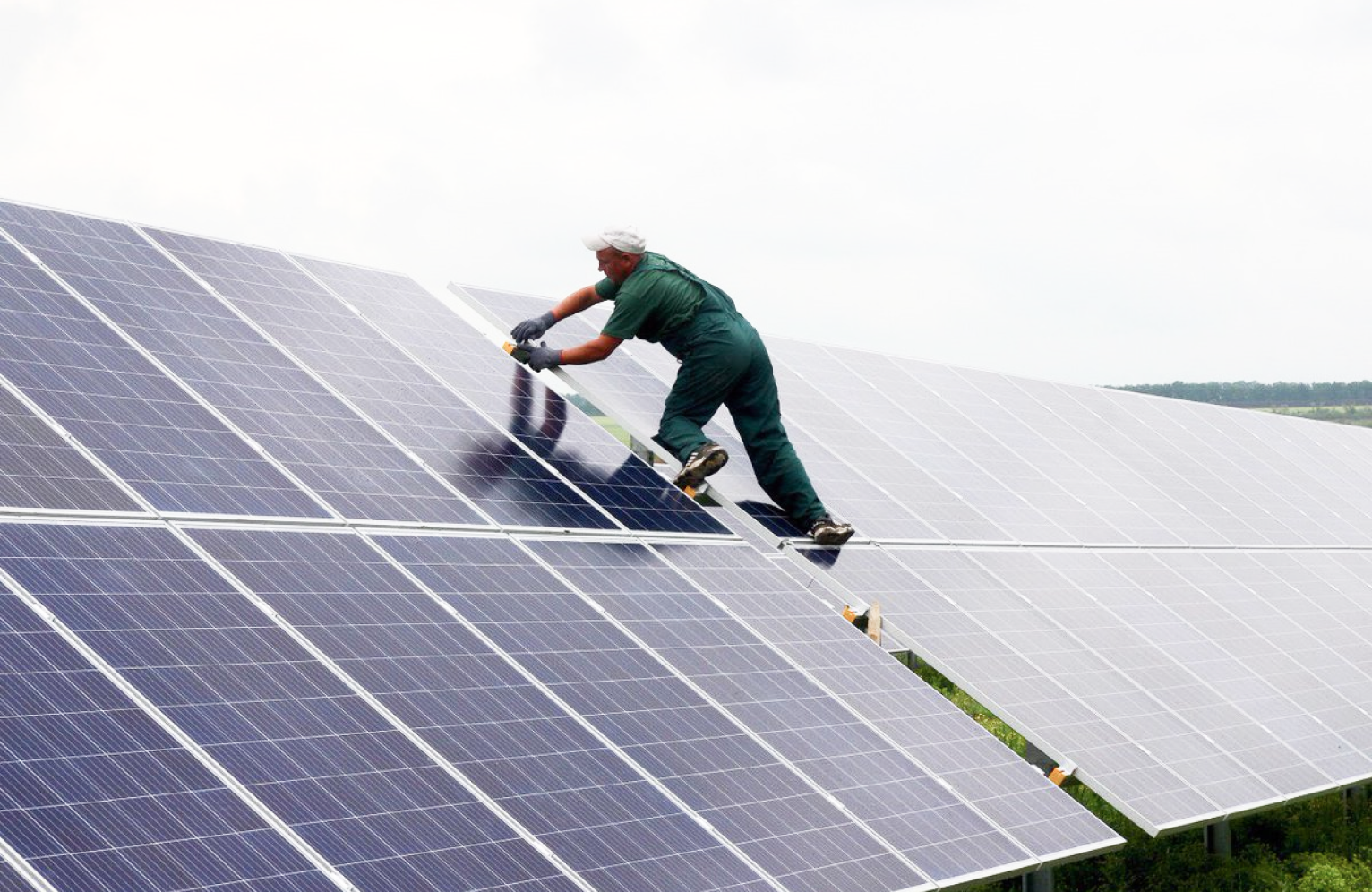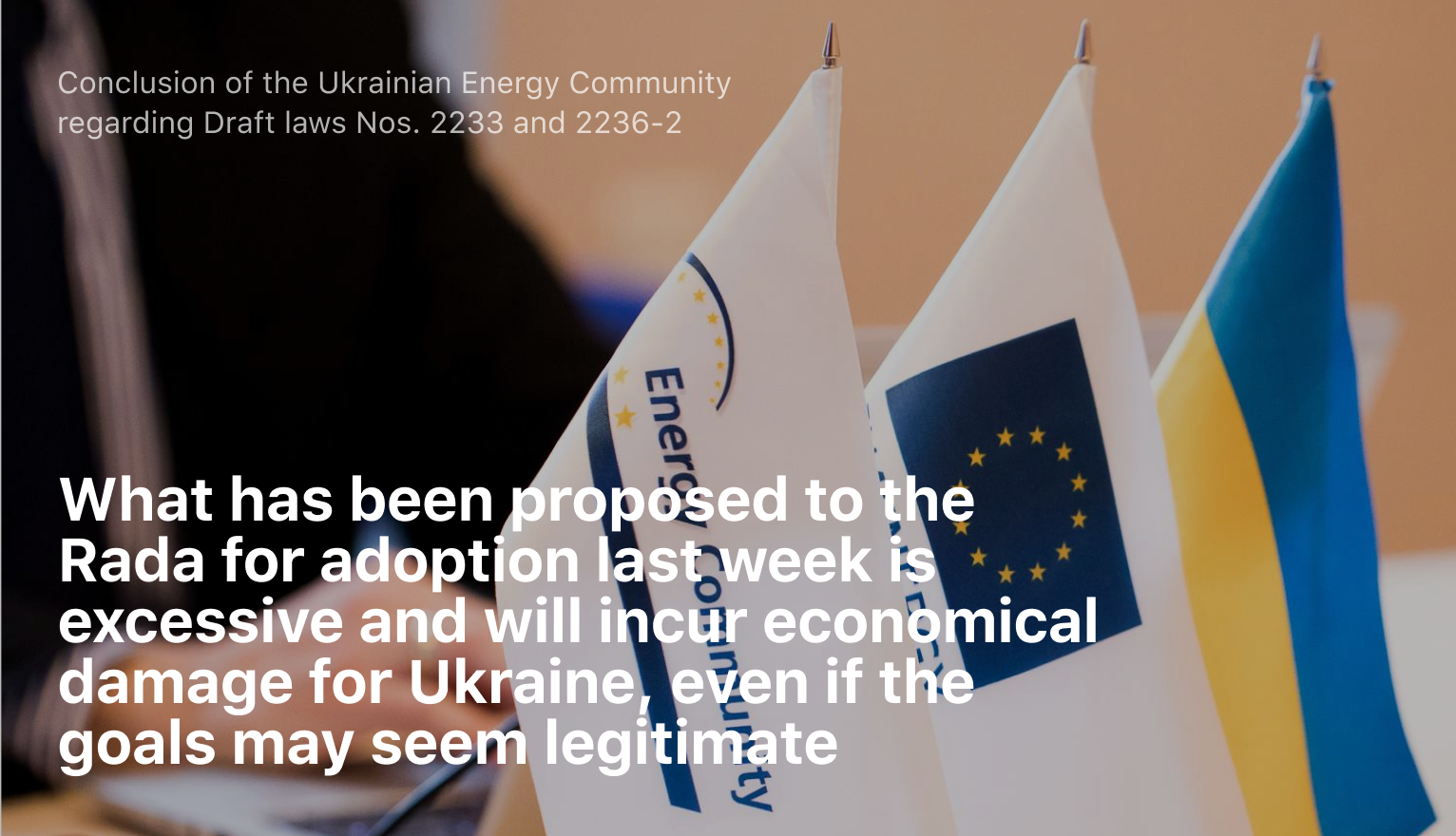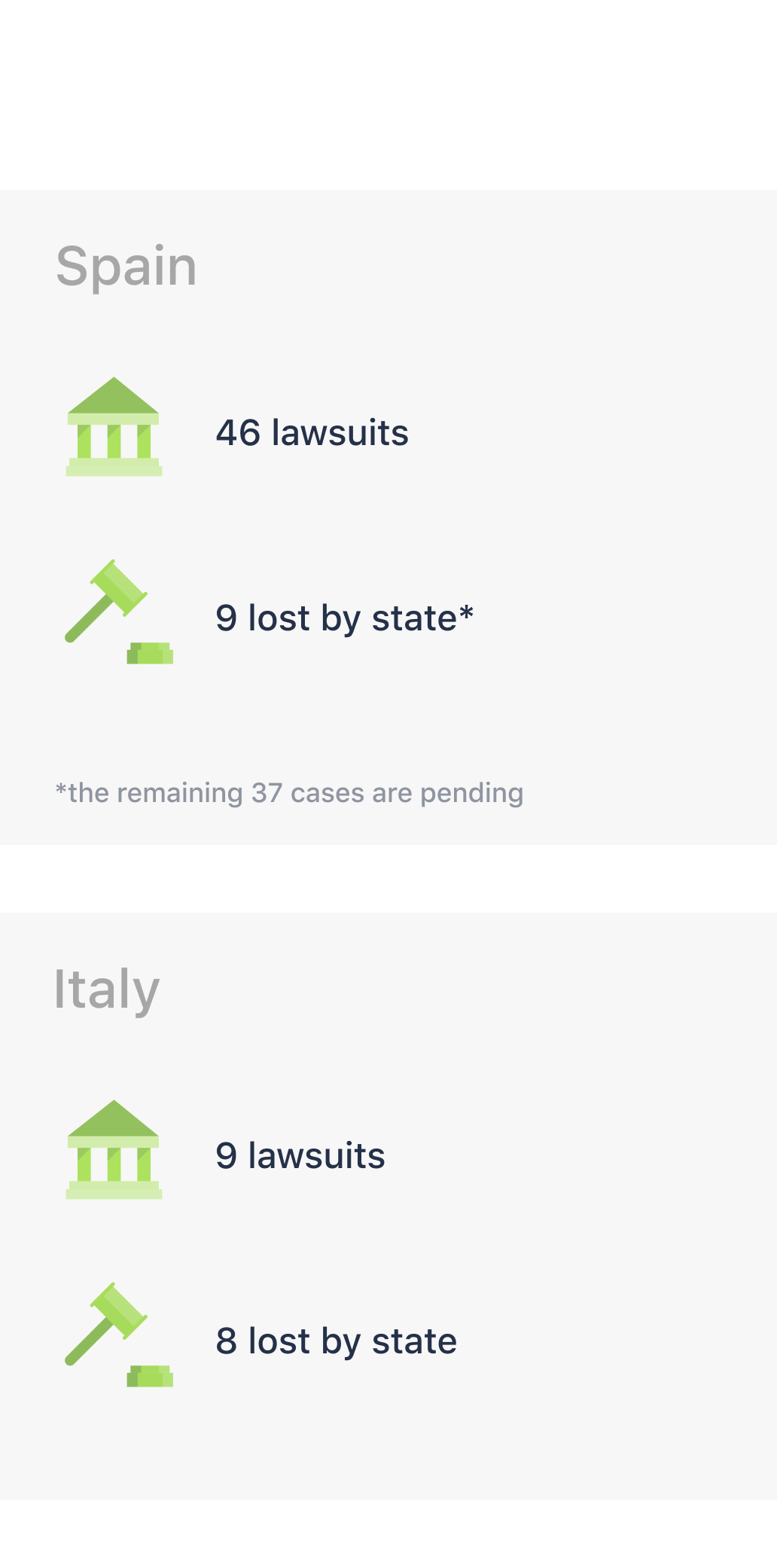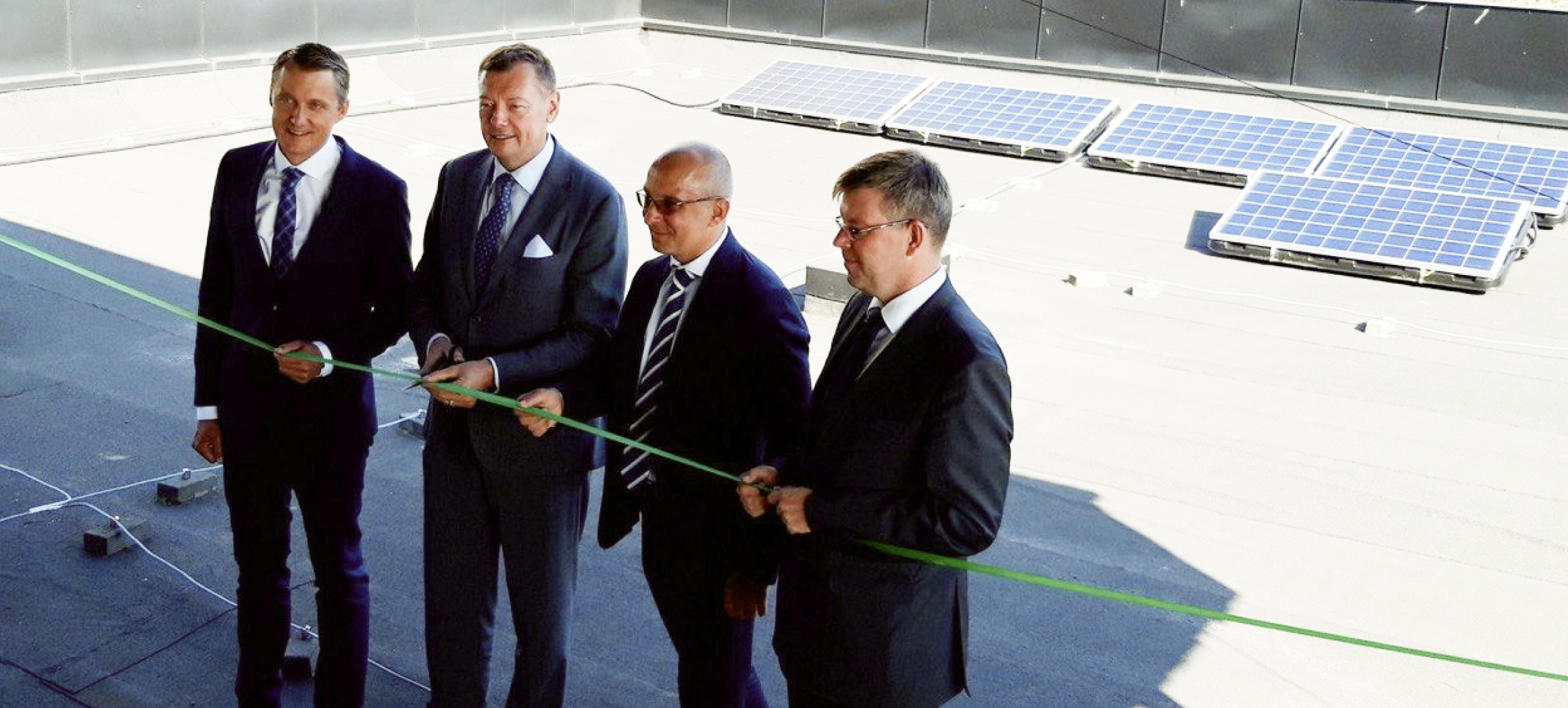The green tariff and the way it works
The “Green tariff” is a fixed price at which the state (or other buyers) buys electricity produced using renewable sources: wind farms, solar panels, small hydroelectric power stations, burning biofuel, etc. Any investor that built a “green” power station in Ukraine could sell its electricity to the state at a price higher than usual. In addition, the price at the “green tariff” was fixed with reference to the euro rate.
This mechanism has attracted more than EUR 4 bln of investment in green energy. Future investors are interested in the possibility of a guaranteed sale of electricity and managing currency risks. They give confidence that the investor will be able to return money taken on credit and reach the expected profit. Ukraine provided these guarantees, which led to a boom in renewable energy.

The “Green tariff” is not a Ukrainian invention. It appeared in the United States, where it was called the “feed-in-tariff”. It was first used under President Jimmy Carter in 1978. Since then, the use of the “green tariff” has spread. Now it is used in many countries of Europe as one of the ways to stimulate green energy. “Green tariffs” have been established in Austria, France, Greece, Great Britain and other countries.
In Ukraine, the “green tariff” appeared in 2008, under the presidency of Viktor Yushchenko. A new era began in 2015, when the legislation on the “green tariff” was revised. The National Commission implementing state regulation in the field of energy and utilities (NKREKP) set the “green tariff” in accordance with the current legislation.
The “Green tariff” is high. That is why it is criticized
The tariff was different for different types of energy sources and varied over time. Thus, if one takes the range from the lowest to the highest rates, the “green tariff” for commercial solar power plants fluctuated from 46.5 eurocents to 15 eurocents in 2019.
The price of the “green tariff” in Ukraine is higher than in the EU. When comparing the average tariffs for each of the energy sources, then, in all cases, the Ukrainian indicator is higher.
In April 2019, the Verkhovna Rada supported draft law No. 8449-d, which states the introduction of a renewable energy auction system. As stated by Ivan Bondarchuk, ILF senior lawyer, according to the law, quotas for state support for green energy will be drawn between investors at public auctions. The starting price is the amount of the “green tariff” specified in the law, from which the participants will sell short. The winner of the auction will be the one who offers the lowest selling price for one kilowatt-hour. It will receive state support for a period of 20 years from the date of the launch of generating facilities. Draft law No. 8449-d provides for a reduction in the “green tariff” starting from 2020: for solar power plants — by 25%, for wind power plants — by 10%.
According to opponents of the “green tariff”, such actions are not enough. They continue to criticize the tariff for its price. Profit Hub Director Konstiantyn Ivanov believes the main thing the tariff could be reproached for is that: “According to the results of 2017, producers of energy from alternative sources added 1.5% of the total electricity generated to the Ukrainian energy system, and received 7.5% of the total cost of Ukrainian electricity generated, UAH 12 bln respectively.”
However, the opponents of the “green tariff” can be supported not only by calculations, but also by the owners of large, often old and energy-intensive enterprises that currently need cheap (and non-environmentally friendly electricity).
In June 2019, Andrii Herus, one of the main opponents of the tariff, promised to reduce it by half. If this does not succeed, he said that he would lay down his mandate and would sweep Kyiv’s main Khreshchatyk street for a month on a volunteer basis.


Draft laws Nos. 2233 and 2236-2 on amending the Law of Ukraine “On the Electricity Market” were submitted to the Verkhovna Rada. They provide for retrospective changes and the abolition of guarantees that the state will buy the generated electricity.
All this led to an extremely controversial market situation. At first, Ukraine approved the “green tariff” and created attractive conditions for foreign and local investors. They invested money and resources, which led to a boom in the Ukrainian green energy industry. Now the new government proposes to review the conditions under which investors were attracted — retroactively and without any warning.
What will happen if the “green tariff” is retrospectively reduced? Court trials and loss of investment
Reducing the “green tariff” is extremely risky. By creating business plans, looking for partners and taking loans, investors calculated how much money they would receive in the future, to whom and how they could sell the generated energy when their investments would pay off, etc. These calculations were based on available data and guarantees with regard to the “green tariff”. In the end, if it wasn’t higher than the European Union one, it would be better to invest in a stable and calm EU market rather than in the Ukrainian one. Instead of continuing to create attractive conditions for investors, Ukraine threatens to change the rules of the game when the game is already underway.
Firstly, this is a violation of obligations from a legal point of view. The Law of Ukraine “On Alternative Energy Sources” guarantees the purchase of all generated electricity from renewable sources until December 31, 2029 at the rate that was established when the facility was commissioned. Protection of the rights of investors, especially investors in the energy sector, was proclaimed in the Energy Charter Treaty which Ukraine signed back in 1994: “Each Party, in accordance with the provisions of this Treaty, encourages and creates stable, equitable, favorable and transparent conditions for investors of other Contracting Parties for the purpose of making investments in its territory”. In addition, Ukraine has signed more than 45 agreements with other countries to protect their investments.
What does this mean? Imminent court trials. This can be confidently stated, because we can see the experience of other countries. Retrospective reviews of “green tariffs” have led to proceedings against Spain, Italy and the Czech Republic. Green energy investors have already received decisions of international arbitrations to compensate for losses measured in billions of US dollars. In addition, the costs of legal procedures are measured in millions of dollars of losses to the budget. Here are the words of Olha Yeromina, a banker of the electric power department of the European Bank for Reconstruction and Development: “Payments on international arbitration will exceed the amounts that they will save now. So what is the point, even from the point of view of calculations, to do this?”


Secondly, according to experts, the investment attractiveness of Ukraine will fall. This is, for example, what Viktor Andriienko, head of the analytics department of the Association of Alternative Fuels and Energy Market Participants, says: “Ukraine will face the same things that are now happening in Spain and the Czech Republic, when a group of companies, including international ones, file lawsuits against the state, challenging the reduction of the green tariff. Instead of stability, the country will receive numerous claims from partner companies in Europe, which significantly worsen the investment climate.”
Thirdly, a retrospective look at the “green tariff” introduces unpredictable adjustments to the implementation of Ukraine’s energy strategy, according to which, the country should reach 25% renewable energy share by 2035. It is not known how the market will adapt and develop in the new conditions and whether it will be able to develop as rapidly as it has been since 2014, and especially since 2017.
Commenting on the draft laws on retrospective revision of the tariff submitted to the Verkhovna Rada, the international organization Energy Community noted: “What was proposed for adoption to the Rada last week is excessive and will entail economic damage, even if the goals [of this proposal] may seem legitimate.”
